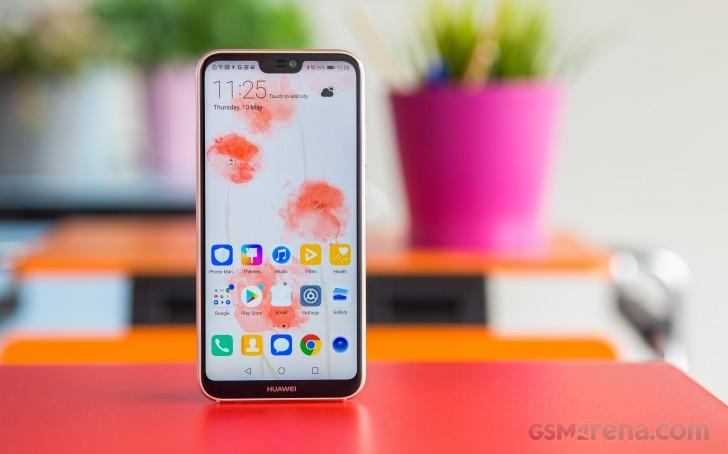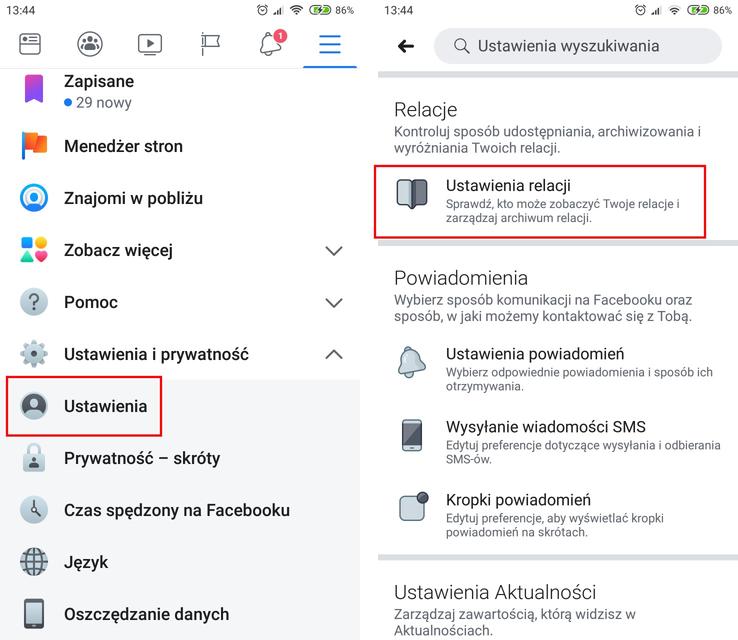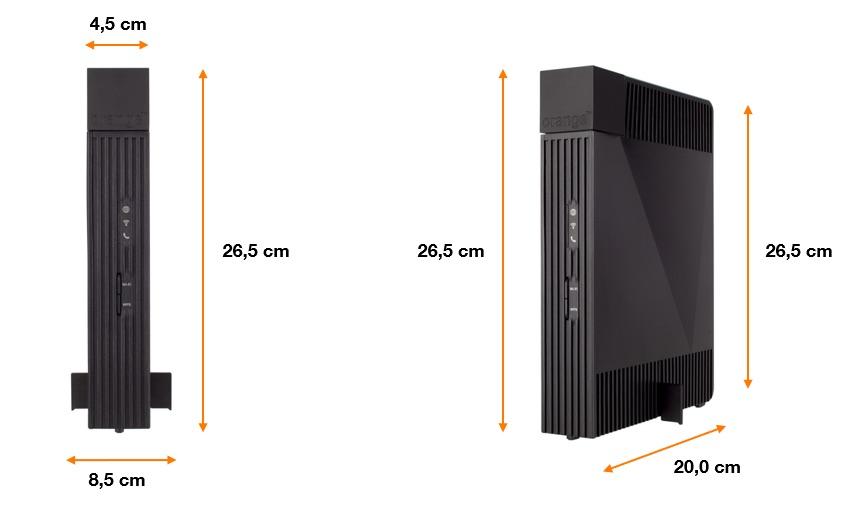Good display with thin bezels
In this respect, the Huawei P20 Lite has taken a big step forward compared to its predecessor P10 Lite. The manufacturer moved with the times and used a display with an elongated 19: 9 aspect ratio with very thin frames.
The screen has rounded corners, with the top corners more rounded than the bottom. It is placed just under the glass, which gives the impression that the painting is glued to its inner part. The display is bright and detailed and offers vivid, saturated colors (even though it is LTPS IPS LCD and not AMOLED as in the Huawei P20 Pro).
The screen makes a brilliant live impression, especially when we set a bright, colorful wallpaper.
"Notch" or indentation in the display
The only controversial element is the use of an indentation, or if you prefer "protrusions" in the upper frame. This is an element that appears in many new smartphones. It can be assumed that it was popularized by the iPhone X, but ... before the "Aiphon", for example, Essential Phone with Android had a similar solution. The Apple smartphone wasn't the first, but it certainly inspired many manufacturers.
The front camera, face scanner, speaker and sensors had to be stuffed somewhere, so the notch in the screen is a natural step in this direction. Huawei P20 Lite, however, has a smaller (narrower) indent than the iPhone X and in my opinion it looks better.
In practice, the famous "notch" does not bother the user in anything. It seems a bit strange at first, but after a few days I stopped paying attention to it. There are also more and more applications supporting the notch, and in the remaining "notch" it is aligned by the system with a bar.
If necessary, the indentation can be hidden - the system then adds a black strip to align the "protrusion". The effect is worse than in the P20 Pro, because the more expensive model has an AMOLED display in which the black bar is perfectly black, and in the P20 Lite we have IPS LCD in which the black is gray. You can see the biggest difference at night or in a dark room.
Housing - handy and attractive
The glass on both sides is slightly bent at the edges (2.5D), and the display diagonal is 5.84 inches, which with an aspect ratio of 19: 9 makes the smartphone handy and the touch operation very comfortable.
The smartphone is lower, narrower, much thinner and much lighter, for example, than the Sony Xperia XZ2, although it has a larger screen and a similar battery.

At the back, the 16 + 2 Mpx dual camera is visible, protruding about a millimeter outside the housing. Below it there is a single LED illuminating diode.
Dual SIM hybrid
In the left edge of the housing you will find a Dual SIM drawer. We will put in it two nano SIM cards or 1x nano SIM + 1x microSD. So it is a dual SIM hybrid. It is not active, only "smart", which means that it allows you to redirect a call from one number to another.
Fingerprint reader - fast and effective
In the middle, in a delicate recess, there is a fingerprint reader. Typically for smartphones, Huawei works quickly and effectively. After their tests, he unlocked the phone with the first touch 10/10 times.
As a curiosity, it is worth adding that in the "Pro" model the reader is placed at the front, in the frame under the screen, which makes it thicker than in the "Lite" model. The other three frames are the same thickness.
Face scanning - effective during the day
Face scanning is a way to quickly unlock your phone. However, I noticed that this function in the Huawei P20 Lite smartphone works a bit differently than in the more expensive Huawei P20 Pro. The difference is simple and most likely caused by different software running.
Well, in the P20 Pro, after picking up the smartphone at night, the brightness of the display increases to illuminate the user's face and help recognize it. In P20 Lite, the screen did not get brighter and therefore the face scanner had a problem with unlocking the phone when it was dark. When I manually set the brightness to a higher level, it worked without any problems, even in perfect darkness.
During the day, the scanner works very well - it unlocks the phone in less than a second. When you pick up the device, the screen wakes up, and when it recognizes a face, it immediately unlocks.
Sound quality
The smartphone has one fairly average sounding speaker. The sound is quite flat and does not stand out with its volume. The Huawei P20 Lite plays much worse than the P20 Pro, which has two speakers and plays surprisingly well.
The P20 Lite has a classic 3.5mm headphone output that provides a very satisfactory quality. Low tones are soft, not too strong, but quite clean (without distortion at high volume), medium tones are clear, and highs are gentle (but that's good, because at least they don't prick the ears).
Battery - average
Huawei P20 Lite has a 3000 mAh battery, which has already been used in other models of this company, incl. Honor 9 Lite, Huawei P Smart or Honor 8.
In practice, the link works quite average. Usually, I could use the phone for 1 day on a single charge, and up to 1.5 days with less load. A typical SOT oscillated around 4-4.5 hours (half and half LTE and Wi-Fi). These results are even slightly below the average in this class of smartphones.
System
In some reviews of the P20 Lite smartphone, I have already heard the statement that it works quite slowly and cuts animations. I cannot confirm this. During my use, Huawei worked quite quickly, even after installing a dozen or so additional programs and games and filling most of the memory with music, movies and photos. Yes, occasional cuts do happen, but the overall impression of using the phone is very positive.
The P20 Lite is not the fastest mid-range smartphone. For example, Xiaomi Mi A1 with pure Android and even Xiaomi Redmi 5 Plus (both cheaper than Huaweia) works even faster and smoother. The price of the P20 Lite is similar to the Xiaomi Mi 6, which is a "cheap flagship", but has a year on the nape of its neck, so it has managed to stand up during this time. The price of the P20 Lite will also start falling in the coming months as well.
The Huawei P20 Lite has Android 8.0 Oreo with the EMUI 8.0 overlay (i.e. slightly older than the P20 Pro, which has Android 8.1 and EMUI 8.1). The appearance of the interface is a matter of taste - some will like it, others will not. Most importantly, the optimization is at a fairly good level.
The only thing I have reservations about is not very fast storage. In the Androbench benchmark, the sequential read and write results were as follows: 296 and 189 MB / s, which may mean that we are dealing here with cheap eMMC memory. The random values were traditionally smaller: 46 and 70 MB / s (surprisingly in favor of writing).
This doesn't make a big difference to the smoothness of animations and overall system performance, but apps and games load slower than smartphones with better UFS memory.
Basic system functions
Performance
Huawei P20 Lite is an "average" so it cannot be described as the king of performance. It has a processor three times weaker than most flagships, but it is pleasant to use on a daily basis. It is also suitable for running most games, with the proviso that some of them will run on low graphics settings.
More information about the performance of the Huawei P20 Lite and comparisons to other models can be found in our phone ranking.
1.0Benchmark results
3DMark Unlimited11886GFXBench T-Rex19 kl / sGFXBench Manhattan9 3DMark (Sling Shot) 139AnTuTu 7880026.3Phone parameters
Clock CPU 2360 MHz Memory RAM 4096 MB Screen diagonal 5.8 inch / inch Resolution Vertical 2280 px Weight 145 g 4.0Battery
Battery - calls 1037 minutes Battery - Internet 612 minutes Battery - movies 741 minutes 8.2Subjective assessment
Movie quality 4.5 Photo quality 4.8 Performance 5Huawei P20 Lite - is it worth buying?
You can read about it on the second page in the review summary. You will also get acquainted with the quality of photos and videos from the camera of this smartphone. I invite!


